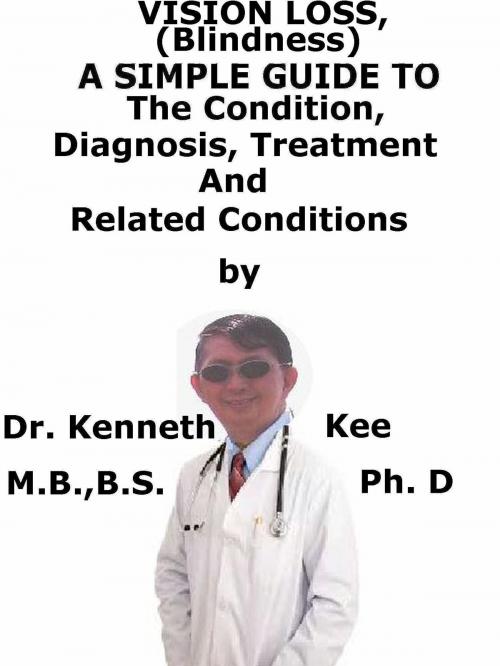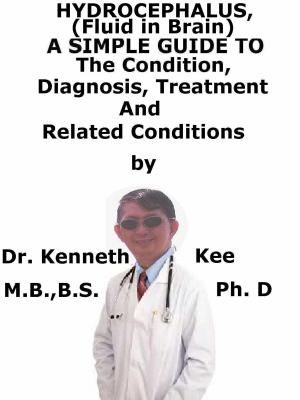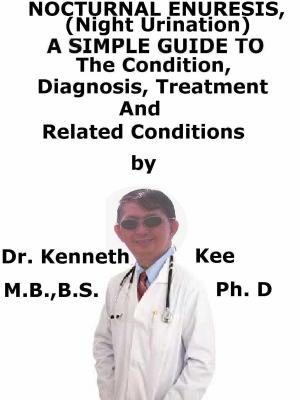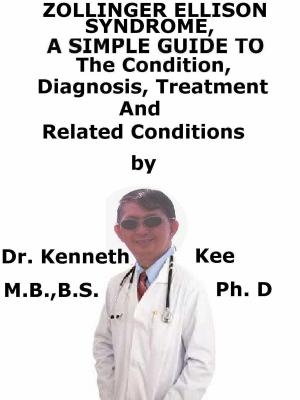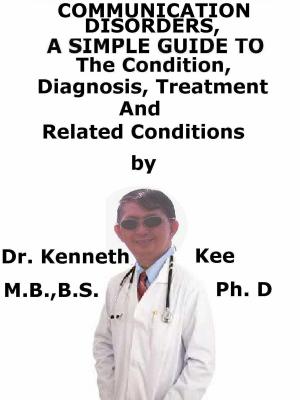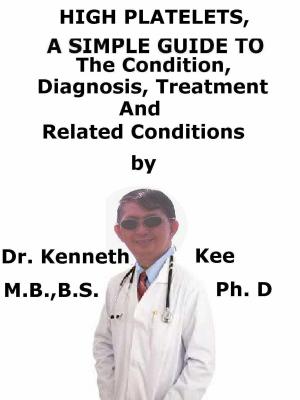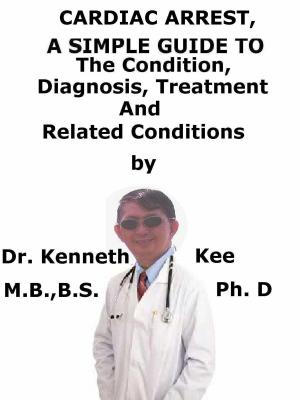Vision Loss (Blindness), A Simple Guide To The Condition, Diagnosis, Treatment And Related Conditions
Nonfiction, Health & Well Being, Health, Ailments & Diseases, Vision, Medical, Specialties, Ophthalmology| Author: | Kenneth Kee | ISBN: | 9781370943319 |
| Publisher: | Kenneth Kee | Publication: | December 22, 2016 |
| Imprint: | Smashwords Edition | Language: | English |
| Author: | Kenneth Kee |
| ISBN: | 9781370943319 |
| Publisher: | Kenneth Kee |
| Publication: | December 22, 2016 |
| Imprint: | Smashwords Edition |
| Language: | English |
Vision Loss (Blindness) is medical disorder that indicates the partial or complete loss of vision.
This vision loss may happen spontaneously or over duration of time.
Some forms of vision loss never result in complete blindness
Complete Vision Loss (Blindness) is the eyes having lost the ability to see.
It may also indicate a loss of vision that cannot be cured with glasses or contact lenses.
Partial blindness suggests that the patient has very limited vision.
Complete blindness indicates the patient cannot see anything and do not see light.
(Most people who use the term "blindness" indicate complete blindness.)
People with vision that is worse than 20/200 with glasses or contact lenses are regarded legally blind in most states in the USA.
Vision Loss (Blindness) has many causes:
1. Accidents or damages to the surface of the eye (chemical burns or sports injuries)
2. Diabetes
3. Glaucoma
4. Macular degeneration
The forms of partial vision loss may vary:
1. With cataracts, vision may be fuzzy or cloudy, and bright light may produce glare
2. With diabetes, vision may be not clear or blurred; there may be missing areas of vision or shadows, and problems seeing at night
3. With glaucoma, there may be loss of peripheral areas of vision leading to tunnel vision
4. With macular degeneration, the peripheral vision is normal but the central vision is gradually lost
Vision loss is diagnosed by:
1. Visual acuity test
2. Visual field test
3. Tonometry test
Treatment:
When the patient has low vision, the patient may have difficulty driving, reading, or doing small work such as sewing or making crafts.
1. Blindness due to some causes such as infection, Vitamin A deficiency or glaucoma can be avoided through early detection and proper treatment.
2. Even though vision loss cannot be recovered, but medical and surgical treatment can help the disease from further becoming worse
Treatment for Impending Blindness
1. Surgery for removal of cataract (clouded lens) with intra-ocular plastic lens
2. Laser surgery for retinopathy
3. Injection for Aged Macular Degeneration
4. Bionic eye technology
5. KAMRA, a thin ring inserted in the cornea, improves the vision of people with aging eyes.
6. Osteo-odonto-keratoprosthesis (OOKP) restore vision in the most severe cases of corneal injury.
Coping with blindness:
Braille
Long white cane
Guide dogs
TABLE OF CONTENT
Introduction
Chapter 1 Vision Loss (Blindness)
Chapter 2 Cause
Chapter 3 Symptoms
Chapter 4 Diagnosis
Chapter 5 Treatment
Chapter 6 Prognosis
Chapter 7 Glaucoma
Chapter 8 Macular Degeneration
Epilogue
Vision Loss (Blindness) is medical disorder that indicates the partial or complete loss of vision.
This vision loss may happen spontaneously or over duration of time.
Some forms of vision loss never result in complete blindness
Complete Vision Loss (Blindness) is the eyes having lost the ability to see.
It may also indicate a loss of vision that cannot be cured with glasses or contact lenses.
Partial blindness suggests that the patient has very limited vision.
Complete blindness indicates the patient cannot see anything and do not see light.
(Most people who use the term "blindness" indicate complete blindness.)
People with vision that is worse than 20/200 with glasses or contact lenses are regarded legally blind in most states in the USA.
Vision Loss (Blindness) has many causes:
1. Accidents or damages to the surface of the eye (chemical burns or sports injuries)
2. Diabetes
3. Glaucoma
4. Macular degeneration
The forms of partial vision loss may vary:
1. With cataracts, vision may be fuzzy or cloudy, and bright light may produce glare
2. With diabetes, vision may be not clear or blurred; there may be missing areas of vision or shadows, and problems seeing at night
3. With glaucoma, there may be loss of peripheral areas of vision leading to tunnel vision
4. With macular degeneration, the peripheral vision is normal but the central vision is gradually lost
Vision loss is diagnosed by:
1. Visual acuity test
2. Visual field test
3. Tonometry test
Treatment:
When the patient has low vision, the patient may have difficulty driving, reading, or doing small work such as sewing or making crafts.
1. Blindness due to some causes such as infection, Vitamin A deficiency or glaucoma can be avoided through early detection and proper treatment.
2. Even though vision loss cannot be recovered, but medical and surgical treatment can help the disease from further becoming worse
Treatment for Impending Blindness
1. Surgery for removal of cataract (clouded lens) with intra-ocular plastic lens
2. Laser surgery for retinopathy
3. Injection for Aged Macular Degeneration
4. Bionic eye technology
5. KAMRA, a thin ring inserted in the cornea, improves the vision of people with aging eyes.
6. Osteo-odonto-keratoprosthesis (OOKP) restore vision in the most severe cases of corneal injury.
Coping with blindness:
Braille
Long white cane
Guide dogs
TABLE OF CONTENT
Introduction
Chapter 1 Vision Loss (Blindness)
Chapter 2 Cause
Chapter 3 Symptoms
Chapter 4 Diagnosis
Chapter 5 Treatment
Chapter 6 Prognosis
Chapter 7 Glaucoma
Chapter 8 Macular Degeneration
Epilogue
